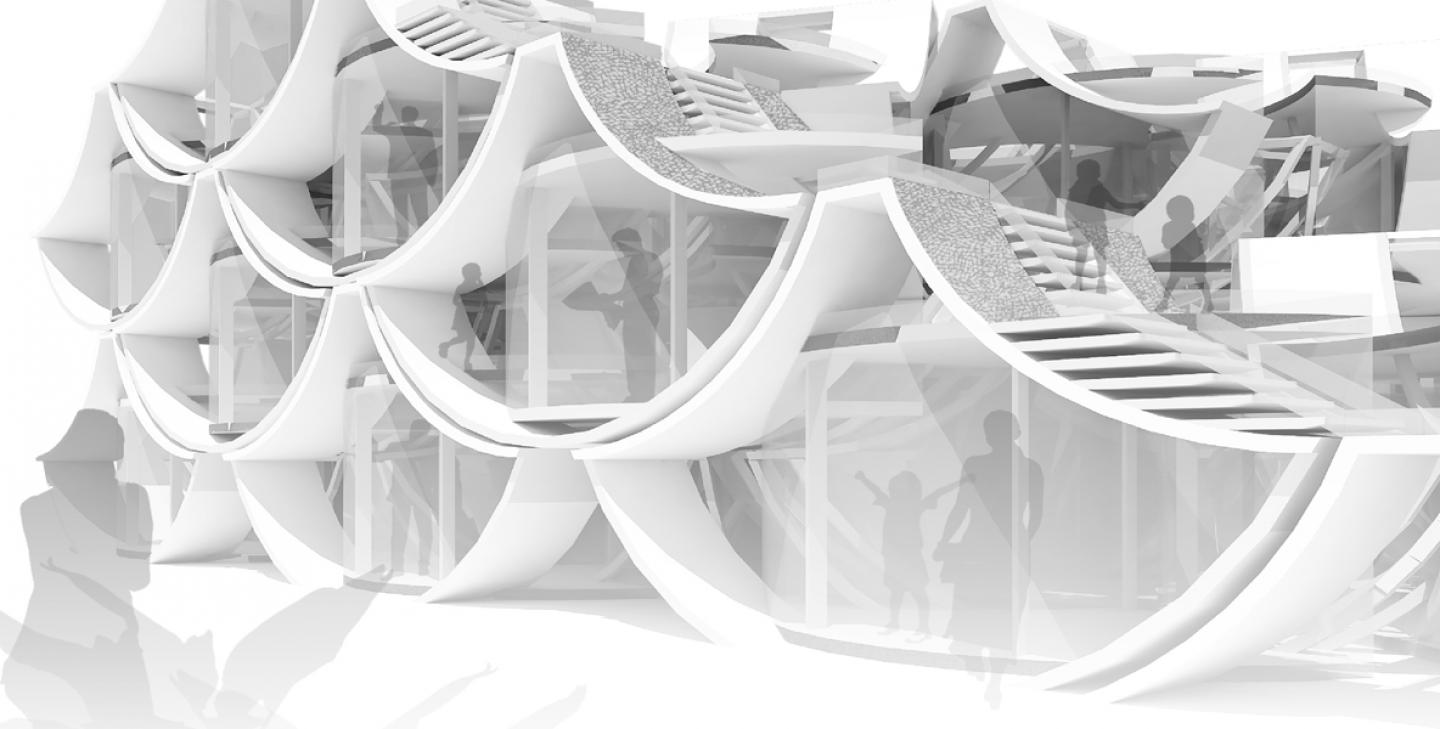In Anping, for a long time people coexisted with nature peacefully. Future housing may be thought of as dynamic catalysts creating new and sustainable life styles.
Housing can develop with people, through innovation.
Natural paradigms are key parameters of housing design.
Sustainable housing requires small and well-integrated communities. While the relationship between architecture and nature has suffered from mutual incompatibility and conflict, the still ongoing development of human settlements in Anping, based on trading and fishing and slow incremental growth for more than four centuries, has shown how nature and humanity can progress together. Our design creates spaces with emergent catalytic qualities where architecture, human interaction and nature can peacefully coexist and mutually benefit. Traditional settlements in Anping show how domestication of vegetation in housings and removing the boundary between indoor and outdoor space can inject sustained life into communities. The shapes and materials chosen are adapted from local precedents: Oyster partitions, Fish Nets, and Bamboo are employed to increase a local grounding of the architectural design as well as to create sensations and experiences pertaining to the particular localities of Anping district.
2010
2010
Project: 2030 Non-Housing / Clustered Shells for Sustainable Neighborhood Communities
Location: Anping, Tainan, Taiwan
Design: 2010
Project Brief: Innovative environmentally sustainable housing
Major Material: Oyster Curtain, Fish Net, Bamboo
One unit floor area: 25 sq.m.
One house floor area (with courtyard space): 105 sq.m.
Site Area: 6,935 sq.m.
JpCoh / Jenchieh Hung + Kulthida Songkittipakdee
Favorited 1 times









